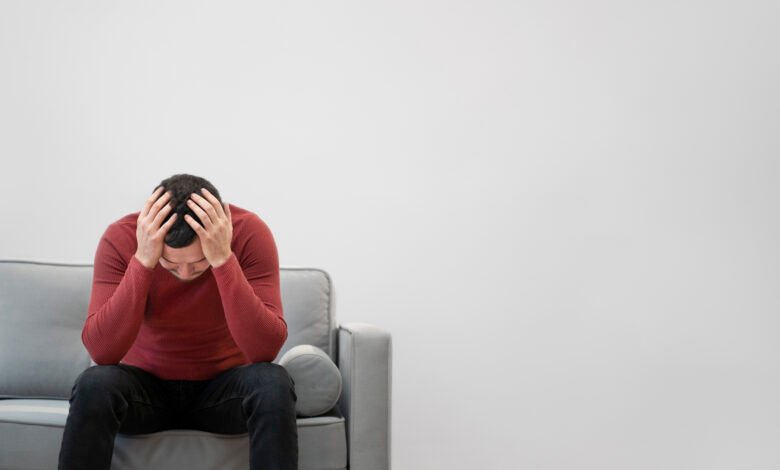
Post-traumatic stress disorder (PTSD) is a mental health condition that affects millions of people worldwide. It is often associated with symptoms such as flashbacks, nightmares, and emotional distress. However, some individuals with PTSD also report physical pain as an additional symptom. The relationship between PTSD and physical pain has been a topic of interest in recent years. There have been numerous studies and research conducted to explore this connection further. To overcome ptsd consult with the psychiatrist because sometimes conditions may get enough severe that you may need to be hospitalized in the best mental hospital in Lahore.
In this blog post, we will discuss the potential link between PTSD and physical pain, as well as the possible reasons behind it.
Let’s dive in to get more details.
The Connection Between PTSD and Physical Pain
Some studies have shown a high prevalence of chronic pain among individuals with PTSD. In fact, according to one study published in the Journal of Traumatic Stress, up to 50% of patients with PTSD also reported experiencing chronic pain. This is significantly higher than the general population, where only 15-20% of individuals experience chronic pain.
PTSD and physical pain have been found to co-occur in both military and civilian populations. For example, a study conducted on veterans found that those with PTSD were more likely to report severe and disabling pain compared to those without PTSD. Similarly, a study on civilians who experienced traumatic events found that those with PTSD had more severe and frequent pain compared to those without PTSD.
Possible Reasons for the Link
The exact reason behind the connection between PTSD and physical pain is still not fully understood. However, there are some theories and potential explanations that have been proposed by researchers:
Biological Factors: Some research suggests that individuals with PTSD may have an altered pain response due to changes in their brain chemistry. For example, PTSD has been linked to abnormalities in the hypothalamic-pituitary-adrenal (HPA) axis, which can affect how the body responds to stress and pain.
Psychological Factors: The emotional distress and hypervigilance associated with PTSD can also contribute to physical pain. Studies have shown that individuals with PTSD may experience heightened sensitivity to pain, making them more susceptible to physical discomfort.
Co-occurring Conditions: Many individuals with PTSD also have other medical conditions such as depression, anxiety, and substance abuse disorders. These conditions can also contribute to physical pain and make it more difficult to manage.
Seeking Treatment
It is essential for those with PTSD and physical pain to seek proper treatment. Both conditions can significantly impact an individual’s quality of life and should not be ignored or dismissed.
Treatment for PTSD may involve therapy, medication, or a combination of both. Cognitive-behavioral therapy (CBT) has been found to be particularly effective in managing the symptoms of PTSD. It helps individuals identify and change negative thought patterns and behaviors that contribute to their pain.
For physical pain, a combination of treatments may be necessary, including medication, physical therapy, and alternative therapies such as acupuncture or massage. It is crucial for individuals to work closely with healthcare professionals to find the most effective treatment plan for their specific needs.
Coping with PTSD and Physical Pain
Living with both PTSD and physical pain can be challenging, but there are strategies that individuals can use to cope:
Practice relaxation techniques such as deep breathing, meditation, or yoga to help manage stress and anxiety.
Engage in regular physical activity to improve mood and reduce pain. It is essential to consult a healthcare professional before starting any exercise program.
Connect with a support system, whether it be friends, family, or a support group. Talking to others who understand can provide comfort and validation.
Seek professional help if coping strategies are not enough. A mental health professional can provide guidance and support for managing both PTSD and physical pain.
Risk Factors
Not everyone with PTSD will experience physical pain, and not everyone with chronic pain will develop PTSD. However, there are some common risk factors that may increase the likelihood of experiencing both conditions:
Traumatic events: Both PTSD and physical pain can result from a traumatic event, such as a car accident, combat experience, or natural disaster.
Genetics: Some individuals may have a genetic predisposition to developing PTSD or chronic pain.
Previous history of mental health conditions: Individuals with a history of anxiety, depression, or other mental health disorders may be more susceptible to developing PTSD.
Managing Physical Pain
Chronic pain can be challenging to manage, but there are strategies that can help alleviate symptoms. These may include medication, physical therapy, or alternative therapies such as acupuncture or massage. It is also essential to maintain a healthy lifestyle by engaging in regular exercise, getting enough sleep, and eating a balanced diet.
Moreover, individuals should work closely with their healthcare providers to find the most effective treatment plan for their specific needs. It may take time to find the right combination of treatments, but it is crucial not to give up and continue seeking help.
Conclusion
There is a strong link between PTSD and physical pain, and both conditions can significantly impact an individual’s quality of life. However, with proper treatment and coping strategies, it is possible to manage symptoms and improve overall well-being. It is essential for individuals to seek help from healthcare professionals and build a strong support system to overcome the challenges of living with both PTSD and chronic pain.
Remember, recovery is a journey, but it is possible with determination, patience, and support. So never give up hope and continue to seek help and support. Together, we can overcome these challenges and find healing and relief. So let’s keep moving forward on the path towards recovery.


